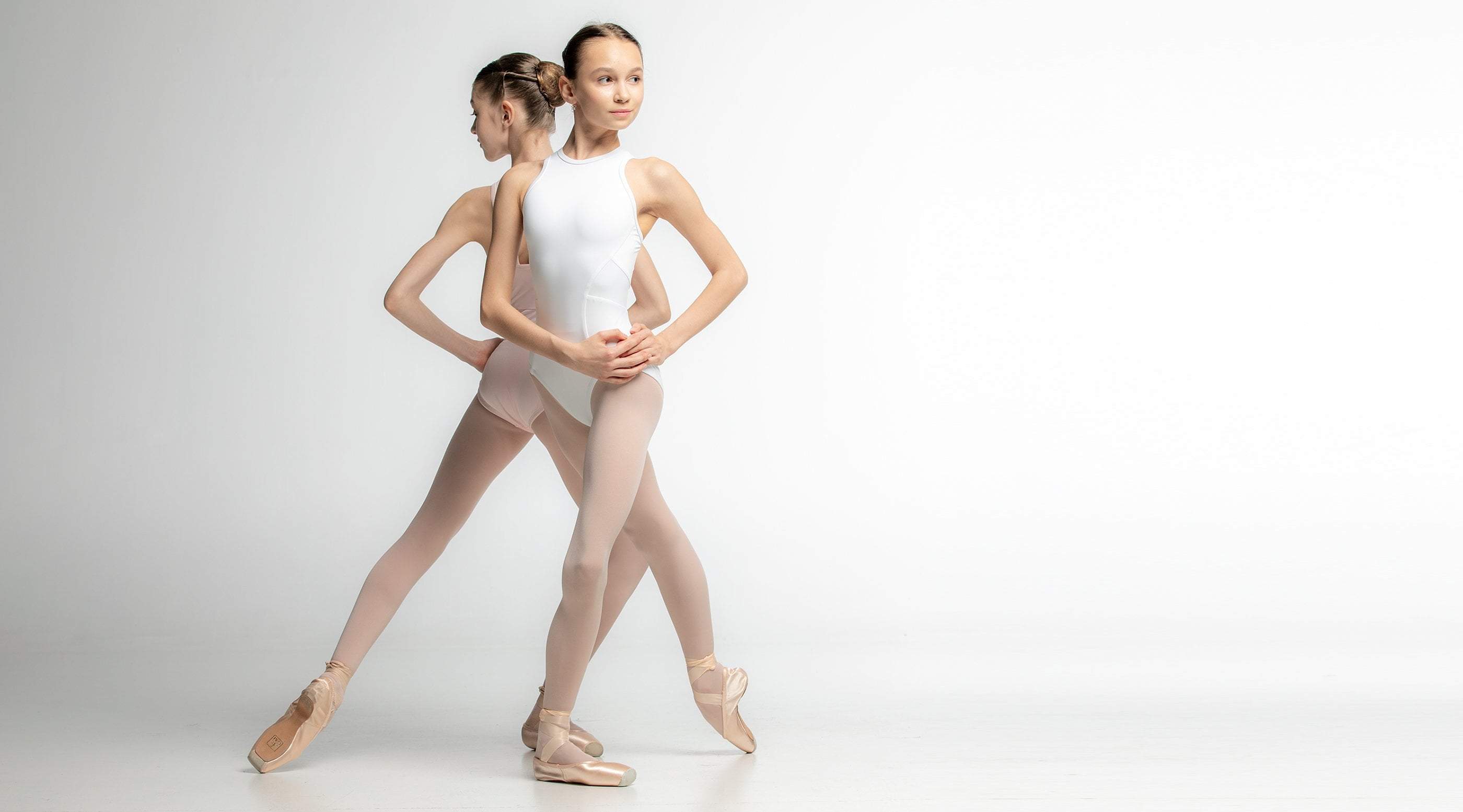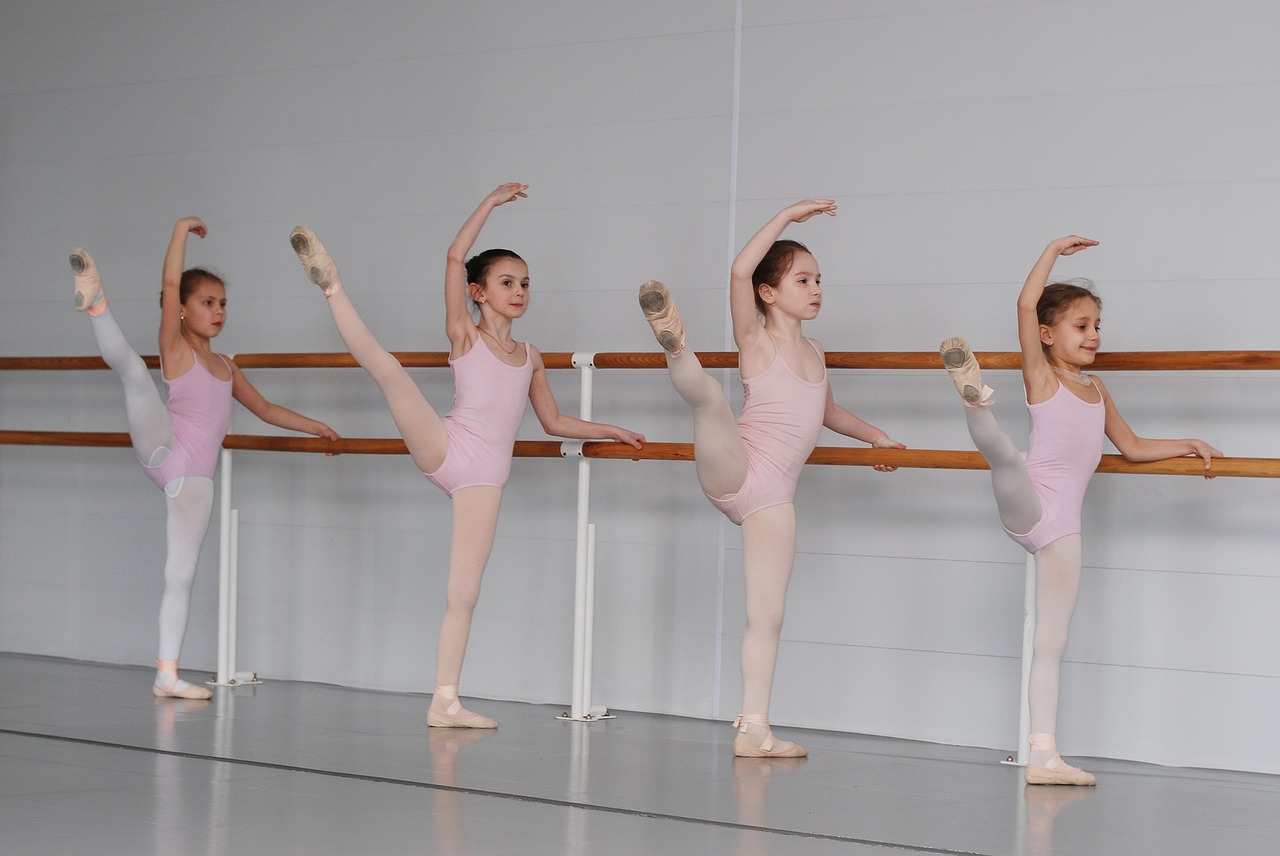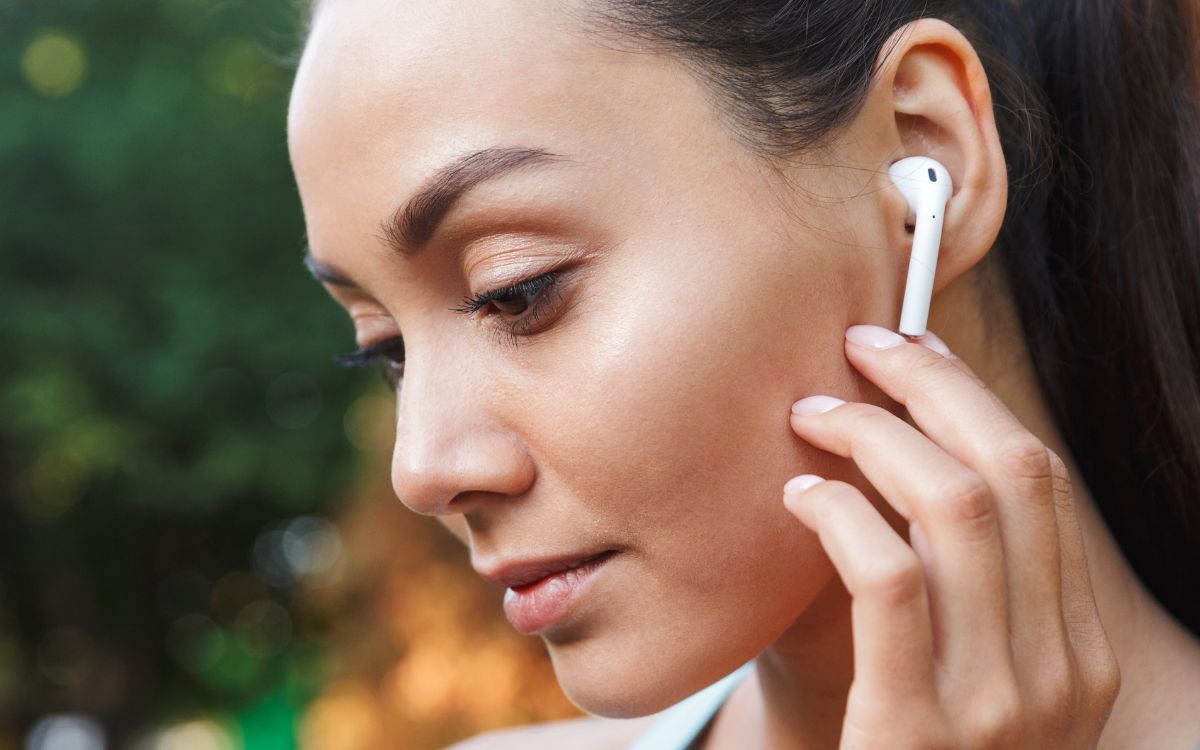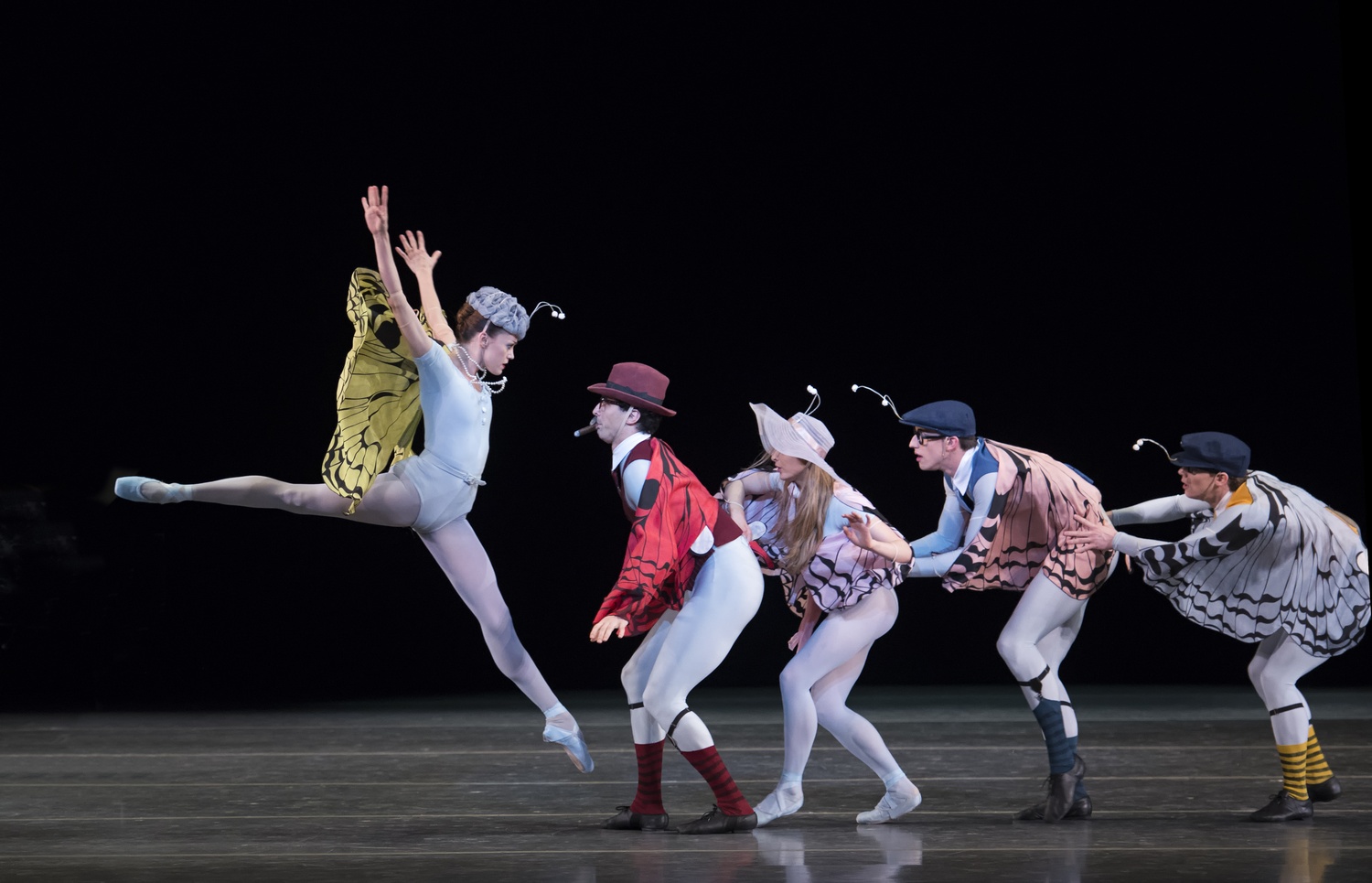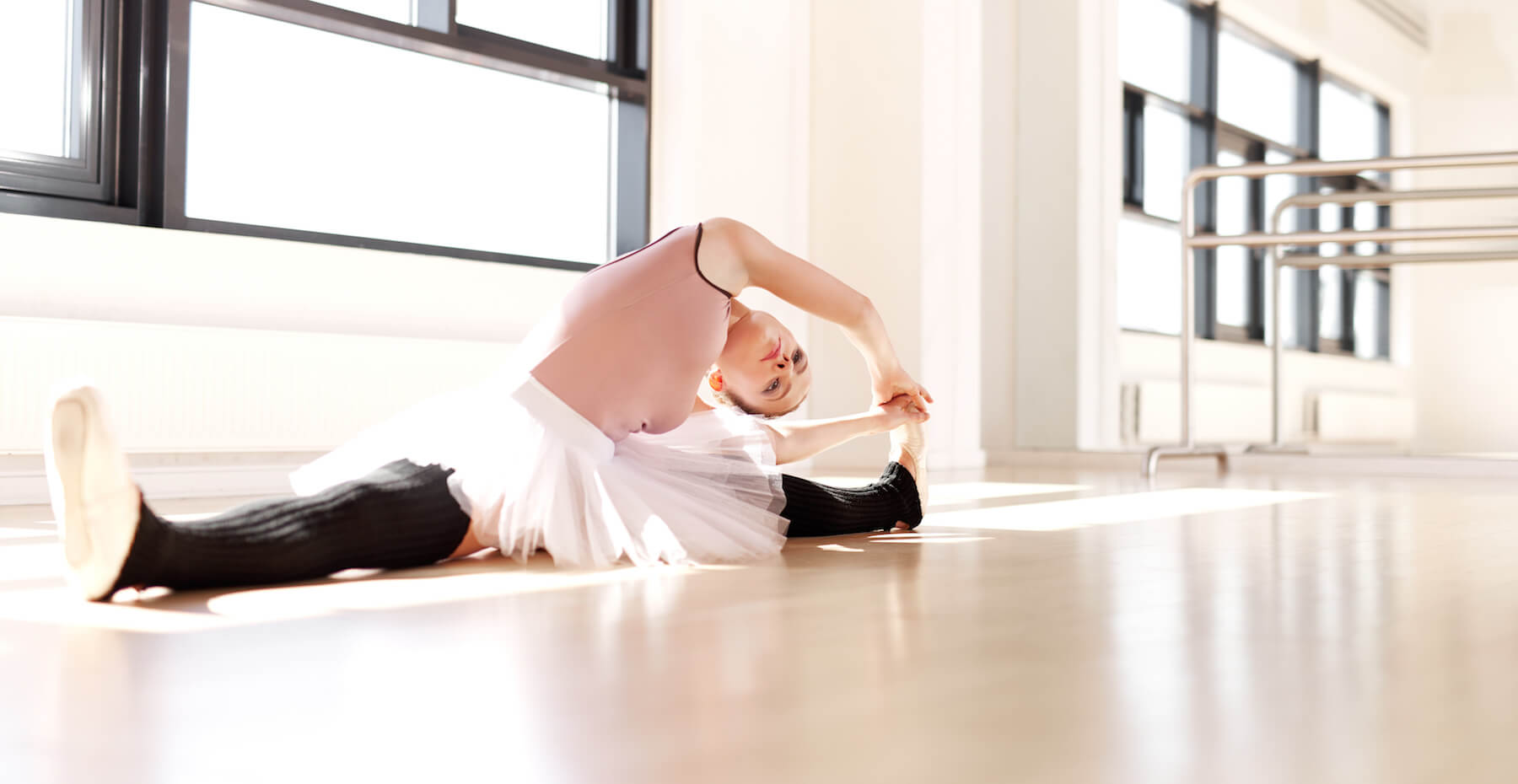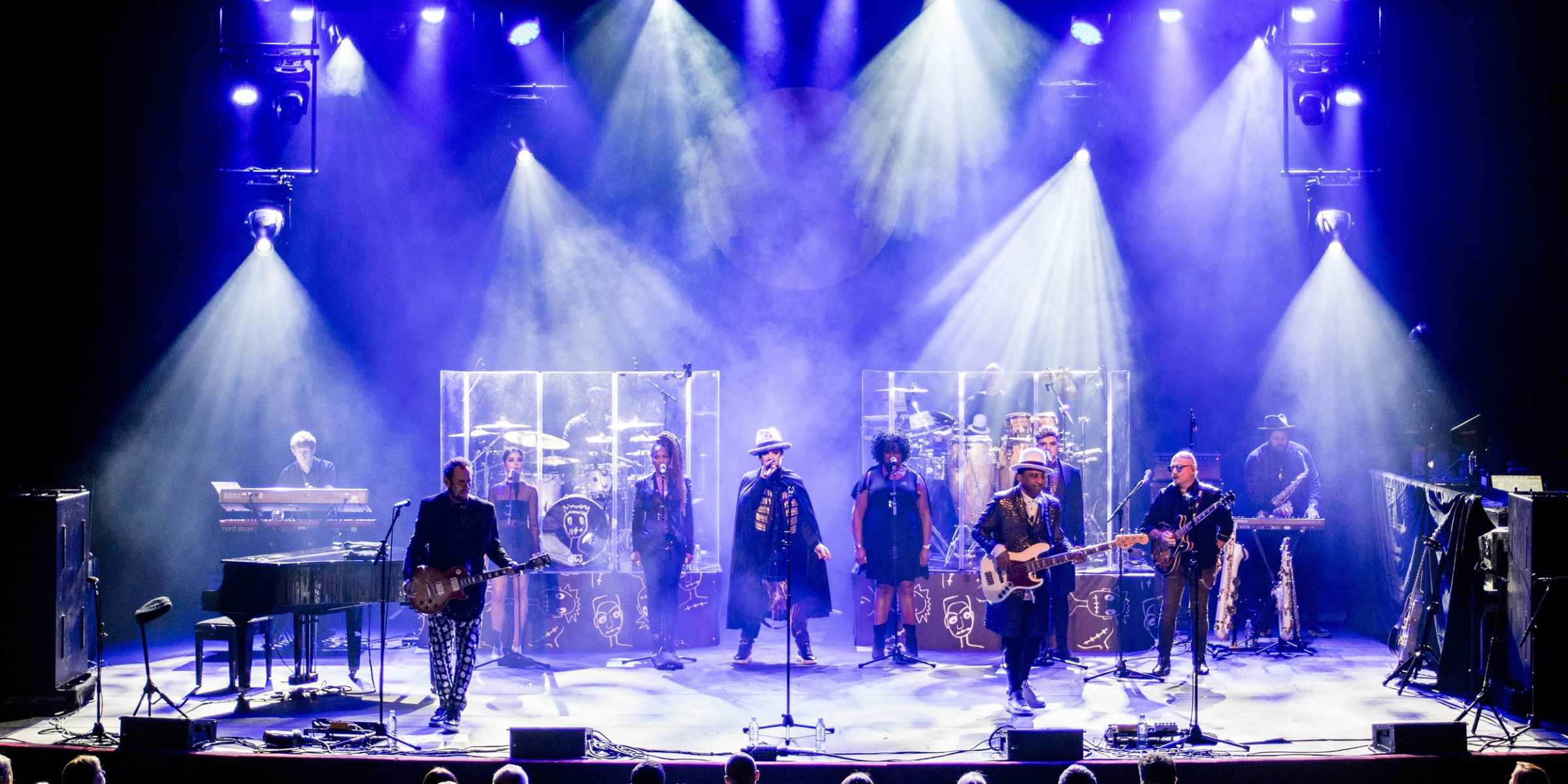Home>Events & Info>Ballet>What Should You Wear To The Ballet
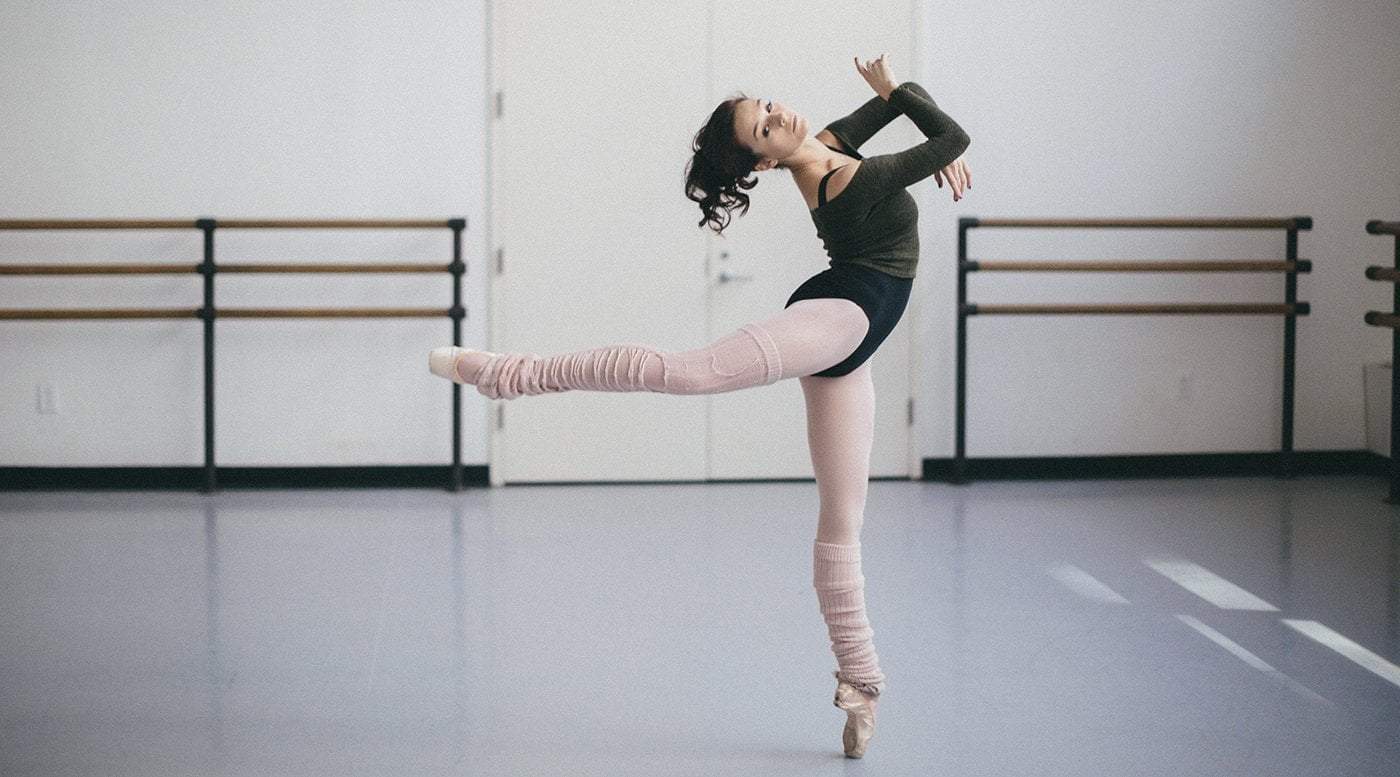

Ballet
What Should You Wear To The Ballet
Modified: January 22, 2024
Discover the perfect attire for your night at the ballet. From elegant dresses to tailored suits, find the ideal outfit to make a statement at the ballet.
(Many of the links in this article redirect to a specific reviewed product. Your purchase of these products through affiliate links helps to generate commission for AudioLover.com, at no extra cost. Learn more)
Table of Contents
Introduction
Attending the ballet is a delightful experience, filled with graceful movements, intricate choreography, and beautiful costumes. Whether you are a ballet enthusiast or attending your first performance, it’s important to dress appropriately to fully immerse yourself in the elegance of this art form. Choosing the right attire not only shows respect for the performers and the art itself but also ensures your own comfort throughout the performance.
The ballet has a long history dating back to the 15th century, and its allure has only grown over the years. From classical ballets like Swan Lake and The Nutcracker to contemporary works that push the boundaries of dance, this art form appeals to people of all ages and backgrounds. To fully appreciate and engage with the ballet, it’s important to understand the dress code and select an outfit that aligns with the occasion.
Whether you’re attending a formal gala event at a renowned opera house or a more casual performance at a local theater, dressing appropriately enhances the overall experience. Not only does it contribute to the ambiance of the evening, but it also shows respect for the performers and fellow audience members.
In this article, we will explore the appropriate attire for the ballet, including the dress code for different types of ballet performances, guidelines for both men and women, footwear options, and accessories to consider. We will also discuss what not to wear to the ballet in order to ensure a comfortable and respectful experience for everyone in attendance. So, let’s delve into the world of ballet fashion and discover the perfect ensemble for your next ballet outing!
Appropriate Attire for the Ballet
When it comes to dressing for the ballet, it’s important to strike the right balance between elegance and comfort. The general rule of thumb is to dress in a manner that reflects the formality of the occasion while keeping in mind the practicality of sitting for an extended period of time.
For most ballet performances, a smart casual dress code is appropriate. Men can opt for a suit or dress pants with a button-down shirt, while women can choose a dress, skirt, or dress pants with a blouse or a nice top. It’s always best to lean towards more formal attire if you’re unsure, as it’s better to be slightly overdressed than underdressed for the occasion.
Keep in mind that the specific dress code may vary depending on the venue and the type of performance. While some ballet companies may have a strict dress code, others may be more relaxed. It’s always a good idea to check the venue’s website or call ahead to inquire about any specific guidelines.
Regardless of the dress code, it’s important to wear clothing that allows for ease of movement and comfort. Remember, ballet performances can last for several hours, so you’ll want to be able to sit and enjoy the show without feeling constricted or uncomfortable.
It’s also worth considering the weather and the season when choosing your outfit. If you’re attending a ballet performance in the summertime, opt for lightweight fabrics and breathable materials to stay cool. In the winter, layering your clothing is a great way to ensure comfort, especially if the theater tends to be chilly.
Ultimately, the goal is to look presentable and feel confident while still being able to enjoy the ballet without any distractions or discomfort. By following these guidelines, you’ll be well-prepared to immerse yourself in the beauty and artistry of the ballet.
Dress Code for Different Types of Ballet Performances
While the general rule of thumb for ballet attire is smart casual, it’s important to consider the specific type of ballet performance you will be attending. Different types of performances may have varying levels of formality, which can influence your outfit choices.
Formal Ballet Performances: If you are attending a formal ballet performance, such as a gala or a premiere, it’s customary to dress in more formal attire. Men should opt for a tailored suit, paired with a dress shirt and a tie. Women can choose an elegant dress or a skirt suit. Adding some stylish accessories, such as a statement necklace or a pair of elegant heels, can elevate your look and add a touch of sophistication.
Matinee Performances: Matinee performances are typically held during the daytime and have a slightly more relaxed dress code. You can still dress smartly, but you have the flexibility to choose more casual attire. Men can wear dress pants or khakis with a collared shirt, while women can opt for a dress, skirt and blouse, or a stylish pantsuit. It’s best to avoid overly casual clothing, such as t-shirts and shorts.
Contemporary or Experimental Performances: Some ballet companies showcase more experimental or contemporary works that push the boundaries of traditional ballet. For these types of performances, the dress code is often more relaxed and casual. You can express your own personal style by opting for trendy and fashionable outfits. However, it’s still important to maintain a sense of respect for the art form and avoid overly casual or revealing clothing.
No matter the type of ballet performance you will be attending, it’s always a good idea to avoid wearing jeans, sneakers, or overly casual clothing. Showcasing a polished and put-together look demonstrates your appreciation for the art form and adds to the overall ambiance of the evening.
By understanding the dress code for different types of ballet performances, you can ensure that your attire aligns with the occasion, allowing you to fully enjoy the beauty and artistry of the ballet.
Dress Code for Men
When it comes to dressing for the ballet, men have several options to choose from to create a stylish and appropriate ensemble. The dress code for men at the ballet typically leans towards formal or smart casual attire, reflecting the sophistication and elegance of the art form.
Suit: For formal ballet performances or gala events, a well-fitted suit is the most appropriate choice. Opt for a dark-colored suit such as navy, charcoal grey, or black. Pair it with a crisp dress shirt and a coordinating tie. If you want to add a touch of sophistication, consider accessorizing with a pocket square or cufflinks.
Sport Coat or Blazer: For a more casual yet refined look, you can wear a sport coat or a blazer. Pair it with dress pants or khakis for a polished appearance. You can choose a solid color or experiment with subtle patterns or textures to add visual interest to your outfit. Complete the look with a collared dress shirt and a tie.
Dress Pants and Dress Shirt: If you prefer a more relaxed but still presentable look, you can opt for dress pants paired with a dress shirt. Choose neutral-colored pants such as navy, grey, or black. Team it up with a well-fitted dress shirt in a complementary color. You can wear it with or without a tie, depending on the level of formality of the occasion.
Shoes and Accessories: Complete your ensemble with appropriate footwear and accessories. Choose dress shoes that are comfortable to walk in, such as oxfords, loafers, or polished dress boots. Avoid athletic shoes or overly casual footwear. Finish off your look with a belt that matches your shoes and add a classic wristwatch for a touch of sophistication.
Remember, the key is to dress in a manner that reflects the formality of the occasion and shows respect for the art form. Whether you opt for a full suit or a more casual combination, make sure your outfit is well-tailored, clean, and wrinkle-free.
By following the dress code for men at the ballet, you will not only look stylish and put-together but also fully embrace the elegance and grandeur of this enchanting art form.
Dress Code for Women
As a woman attending the ballet, there are various options available to create an elegant and appropriate outfit. The dress code for women at the ballet can vary depending on the formality of the performance, but generally speaking, it leans towards a smart casual or more formal attire.
Dresses and Skirts: Dresses and skirts are classic choices for a ballet outing. Opt for a dress that flatters your body shape and falls below the knee or to mid-calf. Choose from a variety of styles, such as a fitted sheath dress, an A-line silhouette, or a flowy, chiffon maxi dress. If you prefer to wear a skirt, pair it with a blouse or a dressy top. Make sure your outfit allows for ease of movement and is comfortable to sit in for an extended period.
Dress Pants and Blouses: If you prefer a more sophisticated and tailored look, dress pants paired with a stylish blouse can be a great option. Choose pants in a neutral color, such as black, navy, or charcoal grey. Pair them with a well-fitted blouse in a complementary color or pattern. Opt for fabrics that are breathable and comfortable to wear throughout the performance.
Footwear: Selecting appropriate footwear is essential for enjoying the ballet comfortably. Opt for dressy shoes with a low or moderate heel. Closed-toe pumps, ballet flats, or elegant sandals can be great choices. Ensure your shoes are comfortable to walk in and match the overall aesthetic of your outfit. Avoid wearing sneakers or overly casual footwear that may detract from the elegance of your ensemble.
Jewelry and Accessories: Adding the right accessories can enhance your overall look while complementing the elegance of the ballet. Opt for simple yet stylish jewelry, such as a delicate necklace, earrings, or a bracelet. Avoid wearing large or noisy jewelry that could distract other audience members or the performers. A clutch or a small handbag is ideal for carrying essentials while maintaining a polished appearance.
Remember, while there may not be strict rules for women’s attire at the ballet, it’s important to dress in a manner that demonstrates respect for the art form and the occasion. Choose garments that make you feel confident and comfortable, while adhering to the overall formality of the event.
By following the dress code guidelines for women at the ballet, you can create an ensemble that allows you to fully immerse yourself in the magic and beauty of the performance.
Choosing Comfortable Footwear
When attending a ballet performance, it’s important to choose footwear that not only complements your outfit but also provides comfort throughout the evening. Since ballet performances tend to last for several hours, it’s crucial to select shoes that allow you to enjoy the show without discomfort or pain.
Low Heels or Flats: Opting for low-heeled shoes or flats is a practical choice for the ballet. Look for shoes with cushioning and support to ensure comfort while walking and standing. Ballet flats are particularly suitable as they are both stylish and comfortable. They provide a sleek and elegant look without the strain that can come from high heels. Avoid shoes with thin soles or no arch support, as they may lead to discomfort during prolonged periods of sitting or standing.
Strap or Ankle Support: To ensure stability and prevent footwear-related discomfort, consider shoes with straps or ankle support. This can help prevent your feet from sliding or slipping within the shoes, providing a secure fit and reducing the risk of blisters or discomfort. Adjustable straps or buckles allow for a customized fit, adapting to the unique shape and size of your feet.
Proper Sizing: Choosing shoes that fit properly is crucial for comfort. Ill-fitting shoes can cause blisters, cramping, or other foot-related issues. Make sure to measure your feet accurately and try on shoes before purchasing or wearing them to the ballet. Consider trying shoes on towards the end of the day when your feet may be slightly swollen, as this will give you a better idea of how they will feel during the performance.
Break-In Period: If you decide to wear new shoes for the ballet, it’s essential to allow for a break-in period. Wear them around the house for short periods in the days leading up to the performance. This will help to soften the materials and prevent any potential discomfort or blisters during the actual event.
Consider Cushioning: If you prefer wearing heels or shoes with minimal cushioning, consider using gel inserts or cushioned insoles to provide extra support and comfort. These accessories can help reduce pressure on your feet and provide additional padding, making it easier to withstand prolonged periods of standing or sitting.
Remember, the key to choosing comfortable footwear for the ballet is to prioritize both style and comfort. By selecting shoes that offer proper support, a secure fit, and adequate cushioning, you can fully enjoy the performance without any distractions or discomfort.
Accessories to Consider
Accessories can elevate your ballet ensemble and add that extra touch of glamour to your overall look. From statement jewelry to elegant handbags, the right accessories can enhance your outfit and make a stylish statement. Here are some accessories to consider when attending the ballet:
Jewelry: Choose simple and tasteful jewelry that complements your outfit. A delicate necklace, a pair of elegant earrings, or a tasteful bracelet can add a touch of sophistication to your look without overpowering it. Opt for pieces that coordinate with the colors and style of your attire. Avoid wearing noisy or oversized jewelry that could distract other audience members or the performers.
Handbags: A small handbag or clutch is a practical accessory for holding essentials such as your phone, lipstick, or tickets. Opt for a stylish and elegant handbag that matches the formality of the occasion. Look for a compact design that is easy to carry and won’t hinder your movements during the ballet performance.
Scarves and Shawls: Depending on the weather and the dress code, a scarf or shawl can be a versatile accessory to consider. A lightweight scarf can add a pop of color to your ensemble, while a shawl can provide warmth if the theater tends to be chilly. Choose fabrics that are soft and comfortable against your skin, such as silk or cashmere.
Gloves: For more formal ballet events or gala performances, gloves can add an elegant and sophisticated touch to your attire. Opt for gloves that coordinate with your outfit, such as long satin gloves or delicate lace gloves. They can not only keep your hands warm but also add a touch of old-world charm to your ensemble.
Hair Accessories: Consider adding hair accessories to enhance your overall look. Whether it’s a sparkling hairpin, a decorative headband, or a silk hair bow, the right hair accessory can elevate your hairstyle and add a touch of elegance.
Subtle Perfume: While not exactly an accessory, a subtle spritz of perfume can be a nice addition to your ballet ensemble. Choose a fragrance that is light and not overpowering, as strong scents can be distracting to both yourself and those around you. Apply perfume sparingly to avoid causing discomfort to others in the theater.
Remember, when selecting accessories for the ballet, it’s important to strike a balance between elegance and practicality. Choose pieces that enhance your overall look without detracting from the performance or causing discomfort. By paying attention to the details and choosing the right accessories, you can create a polished and cohesive ensemble for your ballet outing.
What Not to Wear to the Ballet
While there isn’t a strict dress code for attending the ballet, there are a few guidelines and common-sense considerations to keep in mind when selecting your outfit. Here are some things to avoid wearing to the ballet:
Casual Attire: It’s best to steer clear of overly casual clothing such as t-shirts, jeans, shorts, or athletic wear. The ballet is a special occasion that warrants a more polished and put-together look. Opt for attire that reflects the elegance and formality of the event.
Revealing or Loud Outfits: Avoid wearing outfits that are too revealing or provocative. The focus should be on the artistry and beauty of the ballet, not on distracting or attention-seeking attire. Additionally, try to avoid clothing with loud patterns or excessively bright colors that may draw attention away from the performance. Opt for more subtle and understated choices that allow the dancers to remain the center of attention.
Tall Hats or Large Headgear: While hats can be a stylish accessory, it’s important to be considerate of the people sitting behind you. Avoid wearing tall hats or large headgear that could obstruct the view of other audience members. If you do choose to wear a hat, opt for something smaller and more streamlined.
Noisy or Distracting Accessories: Be mindful of accessories that can produce noise or cause distractions during the performance. Avoid wearing bangles, bracelets, or noisy jewelry that may create unnecessary sound. Opt for more subtle and quiet accessories that won’t disturb others or the performers.
Uncomfortable Shoes: It’s crucial to prioritize comfort when it comes to footwear. Avoid wearing shoes that are too high, uncomfortable, or difficult to walk in. You’ll want to be able to sit, stand, and move comfortably throughout the evening. Opt for shoes with adequate support, cushioning, and stability to ensure a pleasant and enjoyable experience.
Strong Perfumes or Fragrances: While it’s okay to wear a subtle fragrance, it’s important to be considerate of others in the theater who may be sensitive to strong scents or have allergies. Avoid wearing overpowering perfumes or fragrances that may cause discomfort to fellow audience members. Keep your scent light and understated.
By avoiding these fashion faux pas, you can ensure that your attire is respectful, appropriate, and enhances the overall experience for yourself and those around you. The focus should always be on the beauty and artistry of the ballet, allowing everyone to fully immerse themselves in the performance.
Conclusion
Attending the ballet is a wonderful opportunity to immerse yourself in the elegance and artistry of this timeless form of dance. Dressing appropriately for the occasion not only shows respect for the performers and the art itself but also enhances your own comfort and enjoyment throughout the performance.
Whether you’re attending a formal gala event or a more casual ballet performance, it’s important to consider the dress code and select an outfit that aligns with the formality of the occasion. For men, a well-tailored suit or dress pants with a button-down shirt is a safe and sophisticated choice. Women can opt for dresses, skirts, dress pants, or blouses, ensuring that their attire is tasteful and elegant.
Comfort is also a crucial factor to consider when choosing your ballet ensemble. Select footwear that is both stylish and comfortable, such as low-heeled shoes or flats, to ensure that you can fully enjoy the show without any discomfort. Accessories should complement your outfit without being overly flashy or distracting.
It’s also important to be mindful of what not to wear to the ballet. Avoid overly casual attire, revealing outfits, or clothing that may obstruct the view of other audience members. Steer clear of noisy or distracting accessories and opt for more subtle choices that allow the focus to remain on the performance itself.
By following these guidelines and dressing appropriately, you can fully embrace the beauty and artistry of the ballet. Remember, a well-chosen outfit that aligns with the occasion not only enhances the overall experience but also demonstrates your appreciation for this exquisite art form.
So, the next time you attend the ballet, take the opportunity to dress your best, immerse yourself in the magic of the performance, and enjoy this unique and captivating experience!

